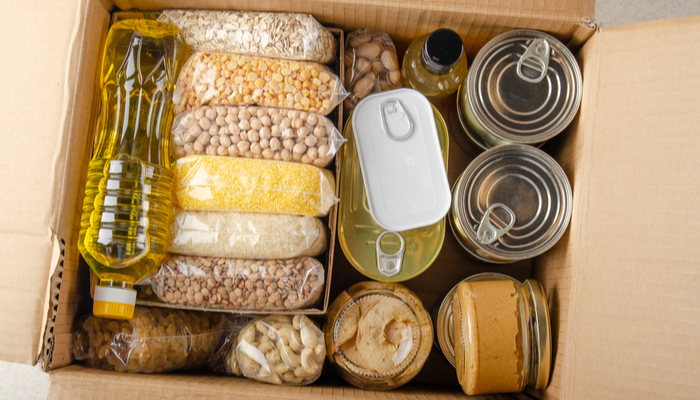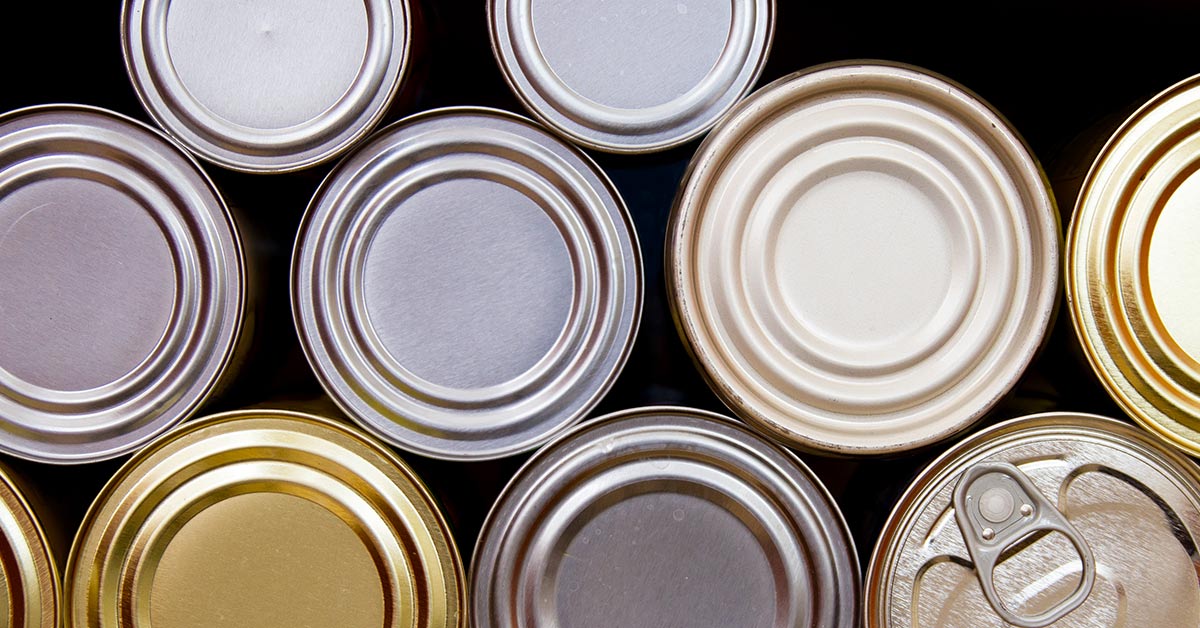Sometimes it pays to be prepared. Over the last several years, we’ve experienced power outages, natural disasters, and of course, a pandemic. These incidents often lead to panic; especially since they always seem to occur when a grocery shop is overdue. To avoid this situation, keep stock of survival food with a long shelf life. This can be beneficial in regular “emergencies,” like when dinnertime approaches and you need a quick meal. But they can also be incredibly reassuring in cases of scarier scenarios. Keep an eye on the expiry dates on these foods, use them, and restock when necessary.
15 Survival Foods to Stock Up For an Emergency

Nut and seed butters
Peanut butter, almond butter, and the like are full of protein and healthy fats. Plus, natural versions omit added sugars and processed fats. Peanut butter in particular is very affordable, but other nut butters and seed butter are available for those with allergies or those who want variety. Check the label after opening to know if the jar needs to be refrigerated or not.
Nuts and seeds
Choose your favorite assortment of nuts and seeds for high-energy and healthy snacks or additions to salads and trail mixes. Here you can pick your favorites among pecans, almonds, cashews, etc. as well as pumpkin seeds and sunflower seeds.
Crackers
Crackers and rice cakes make good bread replacements and pair well with different dips and spread. Whole-grain varieties are more advisable because of the increased fiber content, which can help people feel full for longer. Make sure to seal the packages after opening to ensure freshness.
Read: Dick Proenneke: 30 Years Alone in the Alaskan Wilderness
Cereal
Many kinds of cereal are really heavily processed pieces of sugar, but there are varieties that provide healthy nutrients. For instance, cereals made of whole grains can offer some benefits, including a filling and easily-prepared survival breakfast. Ensure the bag is properly packaged to keep the cereal fresh after opening.
Protein bars and granola bars
Like with cereal, power bars are often as unhealthy and sugary as candy bars. However, there are healthy versions with high protein and fiber content. These often contain simple ingredients like whole grains, nuts, seeds, dried fruits, and dark chocolate. So be on the lookout for these brands.
Dried fruits
Once you start looking into dried fruits, you’ll realize there are more varieties than you first thought. There’s everything from apricots, to raisins, to pineapple, to strawberries, to apples, to bananas, to kiwis, and so much more. You can also choose between sugar-covered dried fruits or plain versions. The plain version still has plenty of sweetness mostly from the crystalizing of natural fructose in the fruits. Of course, they’re still healthier than the sugar-covered types but enjoy them in moderation.
Canned fish and meat
Canned food can have a long shelf-life, making them quintessential for survival stocking up. Just make sure you have some spare can openers. When it comes to tuna, look for brands with the lowest mercury count, which are safer for children and pregnant women.
Read: Take a look inside a $3 million doomsday condo that can sustain 75 people for 5 years
Canned fruits and vegetables
Of course, nothing beats fresh produce but canned food can provide essential nutrients in a pinch. They tend to taste best when cooked into dishes like casseroles, shepherd’s pie, salads, chili, and soups. Look out for low-sodium brands.
Pasta
Pasta offers a filling and versatile meal. Plus, bags of dried pasta can stay in the pantry for months. For those with food allergies or dietary restrictions, look for pasta made from rice, chickpeas, or similar alternatives. Don’t forget to buy some cans or jars of tomato sauce to pair with it. [1]
Bottled water
When it comes to water, try to stock about three days worth, with at least one gallon per person in the household. This is for the case of an emergency where there’s no running water. Therefore, people should drink about half of a gallon a day and use the other gallon for cooking and washing. Alternatively, buy water with added minerals, nutrients, and electrolytes, which can help hydration. Just be wary of drinks with too many additives and sugars.
Salt, pepper, spices, and sugar
While spices aren’t vital to survival, they can make all the difference during an emergency. Just because you have to bunker down doesn’t mean you have to eat cold, bland food. A supply of salt, pepper, sugar and favorite spices could cover up the mellow taste of canned and jarred food, making these dishes more enjoyable. And if there’s a disaster going on, you deserve good-tasting meals.
Read: “Home-Free” Man Lives in Sheep-Drawn Covered Wagon, Thrives on Mostly Milk and Wild Edibles
Multivitamins
Supplements and vitamins can help maintain a healthy diet when you don’t have full access to a grocery store. Vitamin C, vitamin D, and other supplements can also help boost immunity, which can be extremely helpful if you have to quarantine during a pandemic — as you probably already know.
Dried whole grains
There are many types of whole grains you can stock up and cook whenever needed. Plus, they can be extremely nutritious and filling. They are also extremely versatile, easily paired with sweet or savory dishes. Take your pick of oats, quinoa, barley, kasha, brown rice, and popcorn. [2]
Milk
No, not regular milk. Instead, stock up on powdered milk; all you need to do is add water, and you’re set to go. Alternatively, you can stock up on types of milk that are shelf-stable before opening. There are many vegan versions of this, such as soy milk, almond milk, or coconut milk.
Olive oil and vinegar
Olive oil is very nutritious and it’s the base of many recipes, including healthy homemade salad dressings. The other half is vinegar, which is shelf-stable, versatile, and flavorful. These two ingredients pair well when cooking meat, poultry, fish, and vegetables. [3]
Keep Reading: ‘Adulting 101’ The High School Class That Teaches Real-World Survival Skills That’s Going Viral
Sources
- “These Are the Best Foods to Stockpile for an Emergency.” Real Simple. Vanessa DiMaggio and Stacey Leasca. April 8, 2021
- “15 Foods You Need in Any Emergency.” Everyday Health. Kelly Kennedy, RDN.August 24, 2021
- “12 of the Best Non-Perishable Foods.” Healthline. Jillian Kubalas, MS, RD. January 16, 2020

